The Primal Diet Meal Plan That Actually Rewires Your Brain (And Why Most People Get It Wrong)

Look, I’ll be real with you – most people think the primal diet is just another food list to follow. I used to think that too. But after years of trial and error (and more than a few frustrated moments staring at my coworker’s bagel), I’ve learned this isn’t just about the food – it’s about how your brain responds to what you eat. The real transformation happens in your head, not just your waistline.
Here’s the thing though – I’m not a doctor, and I’m definitely not perfect at this. Some days I eat pizza and call it a day. But when I stick to this approach most of the time, I feel way better. And what I want to share with you is everything I’ve figured out about making primal eating work for real people with real lives.
The primal diet operates on the principle that 0-50g carbs per day is recommended if you’re looking to lose weight, or are a diabetic according to the Carbohydrate Curve framework, but here’s what I think is really happening – when you cut out the processed junk, your brain starts craving it less after just a few days.
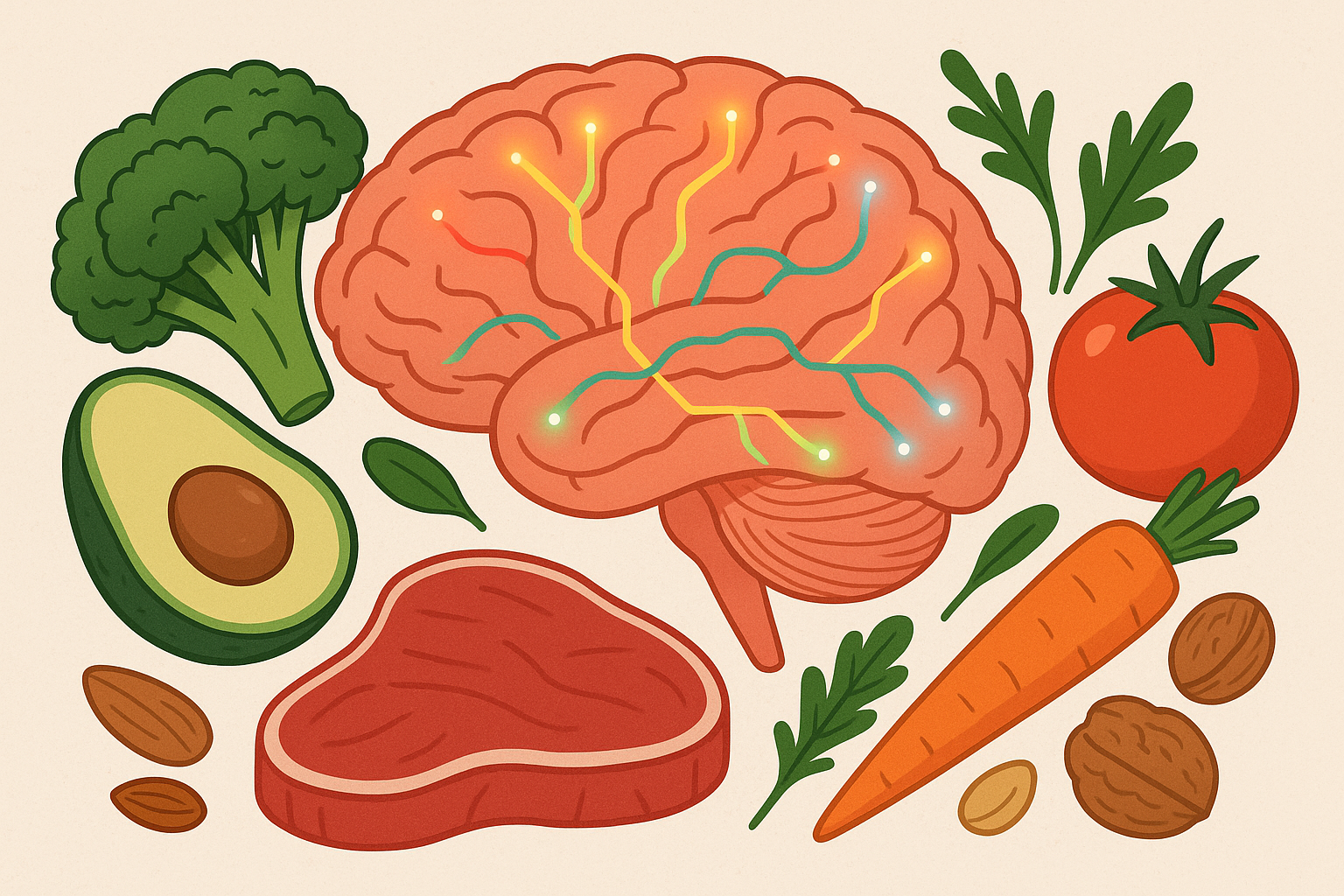
Table of Contents
- Why Your Brain Chemistry Matters More Than Your Food List
- The Real Difference Between Primal and Paleo (It’s Not What You Think)
- Finding Your Personal Primal Sweet Spot Through Trial and Error
- Advanced Strategies for Body Composition and Performance
- The Primal Bod Approach: When Physique Goals Take Priority
- Final Thoughts
TL;DR
- The first few days of eating real food can be rough, but your brain stops craving junk pretty quickly – timing and what you eat together matters more than being perfect
- Mark Sisson’s 80/20 rule isn’t about cheat meals; it’s about not losing your mind trying to be perfect all the time
- Your body is different from everyone else’s – what energizes your friend might make you feel like garbage, so pay attention to how YOU feel
- You can use periods of very low carbs to speed up fat loss while still eating real food
- If you want to look better naked, some primal foods are better than others for building muscle and burning fat
- When you eat matters almost as much as what you eat – work with your body’s natural rhythm instead of against it
Why Your Brain Chemistry Matters More Than Your Food List
Ever wonder why you can eat a whole bag of chips but struggle to finish a steak? Here’s what I think is happening – modern processed foods mess with your brain’s reward system in ways that real food just doesn’t. When I switched to eating mostly primal foods, the weirdest thing happened. I stopped thinking about food all the time.
Understanding what is a primal diet at this level changed everything for me. It’s not about willpower or restriction – it’s about giving your brain a break from the constant stimulation of processed junk.
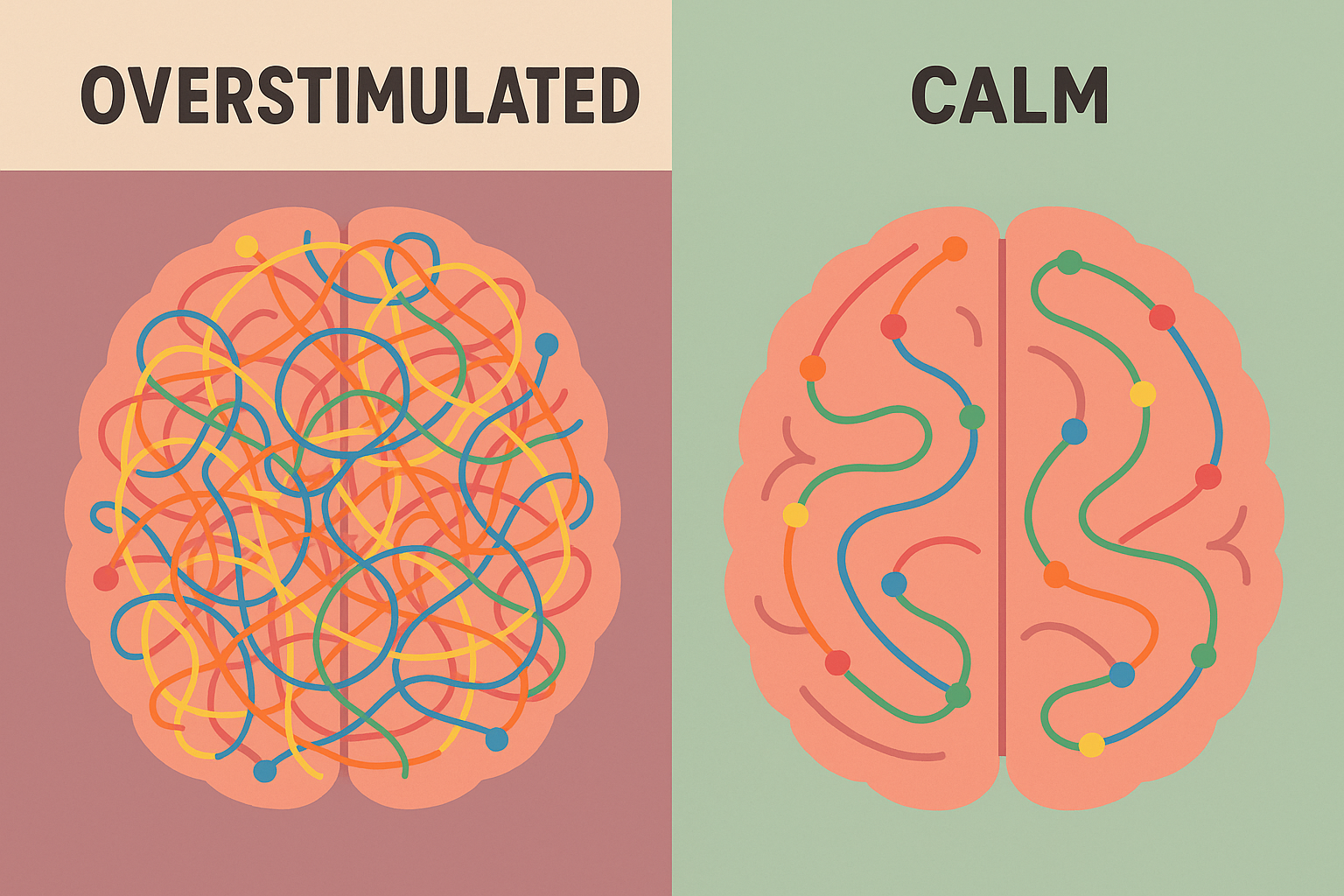
How Real Food Helps Your Brain Chill Out
Your brain evolved to respond to natural foods, not the crazy combinations found in processed stuff. When you switch to primal foods, you’re basically giving your brain’s reward system a chance to reset. This isn’t just theory – there are actually things you can do to make this transition feel easier instead of like torture.
Now, before you think I’m crazy, hear me out. This isn’t some magic cure-all. But there’s definitely something different about how your brain responds when you eat real food versus the processed stuff.
The First Few Days Are Rough (But Here’s How to Make Them Suck Less)
Look, I’m not going to sugarcoat this – the first three days can be brutal. I remember staring at my coworker’s bagel on day two like it was calling my name. But here’s what I’ve learned: there are ways to make this period way more manageable.
Similar to how intermittent fasting requires strategic timing for women, getting through those first few days demands some planning.
You’ll want to ditch all processed sugars and fake sweeteners completely for 72 hours – no exceptions, I know it sucks. Within 30 minutes of waking up, eat some protein (I usually go with eggs or leftover meat from dinner). Include fermented foods like sauerkraut or kimchi with your meals because they help your gut make the good brain chemicals.
My friend Sarah tried this after years of afternoon crashes. She didn’t track every hour (who has time for that?), but she did eat 3 scrambled eggs with sauerkraut every morning at 7 AM, followed by grilled salmon with kimchi for lunch. By day 3, she wasn’t desperately searching her desk drawer for candy at 3 PM anymore. She told me she felt “mentally clear” for the first time in months.
If you’re feeling ambitious, track how you feel throughout the day during these three days. Sounds obsessive? Maybe, but you’ll start noticing patterns in how your body responds. Some people crash around 2 PM on day two, others feel amazing by hour 48. Knowing your pattern helps you prepare next time.
The primal diet works because it stops the constant ups and downs that keep you trapped in craving cycles. This isn’t about restriction – it’s about giving your brain a chance to remember what normal feels like.
Working With Your Body’s Natural Clock (Instead of Against It)
Here’s something most people don’t realize – when you eat matters almost as much as what you eat. Your body has natural rhythms for processing different nutrients throughout the day. Primal eating naturally aligns with this, but the timing of specific nutrients can either make everything easier or completely mess things up.
Eat 30-40g of protein within an hour of waking up. This isn’t some arbitrary rule – your stress hormone naturally peaks in the morning, and protein helps balance this out while giving your brain the building blocks it needs for the day.
Front-load your carbs from vegetables and fruits in the first half of your day when your body can handle them better. After 3 PM, stick mostly to protein and healthy fats. Your body naturally shifts toward fat burning in the evening, so why fight it?
Stop eating 3-4 hours before you actually get sleepy (not when you think you should go to bed, but when you’re actually tired). This gives your digestive system time to wind down and helps you sleep better.
This timing approach is what separates the primal diet from just another low-carb plan – it’s designed to work with your biology instead of against it.
Getting Your Gut Bacteria on Your Side
The primal diet creates a specific environment in your gut that’s different from both the standard American diet and even other healthy approaches. This bacterial landscape directly affects your metabolism, how inflamed you get, and how clear your head feels. Understanding how to cultivate the right bacteria makes the difference between feeling okay and feeling incredible.
Just as improving digestion requires specific strategies, getting your gut bacteria right for primal success takes some targeted moves.
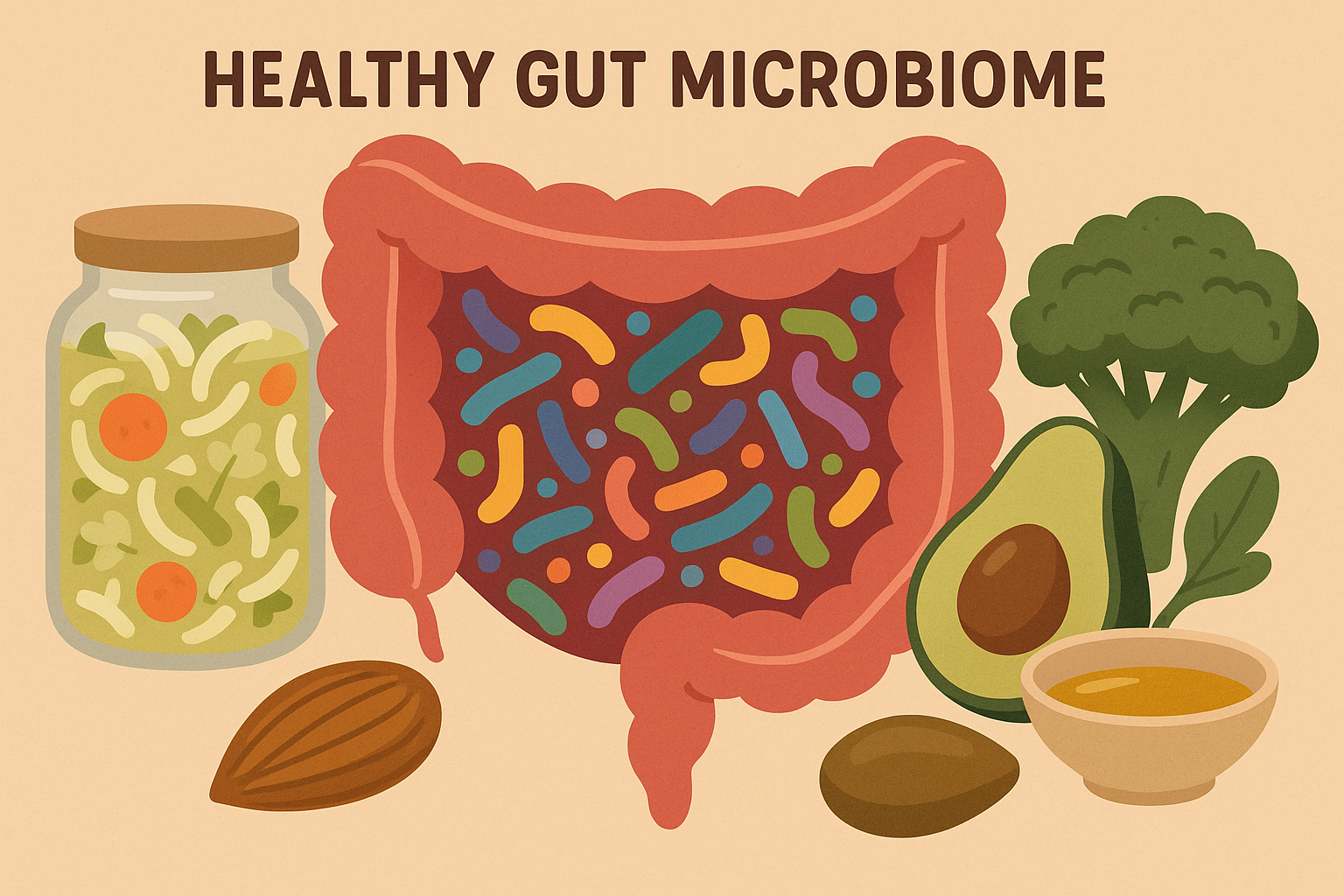
Food Combinations That Actually Make a Difference
Not all primal foods affect your gut bacteria the same way. Specific combinations can feed the good bacteria while starving the bad ones. I’ve seen people feel dramatically different within just two weeks when they get these combinations right. It’s not complicated, but it is specific.
Pair foods like artichokes, garlic, and onions with fermented foods at the same meal. The first group feeds the good bacteria you’re adding with the fermented stuff. Most people eat these separately and miss out on this effect.
Switch up your fermented foods weekly – sauerkraut one week, kimchi the next, then maybe some kefir or kombucha. Each one brings different bacteria to the party, and variety is key for a healthy gut.
Include resistant starch sources like cooled potatoes or green bananas 2-3 times per week. These feed good bacteria in your colon that produce compounds which reduce inflammation and support brain health.
Pay attention to how your digestion and energy change throughout this process. Better digestion usually comes first, followed by more stable energy and improved mood as your gut adjusts.
The primal diet’s focus on whole foods naturally supports good bacteria, but these strategic combinations speed up the process significantly.
Using Small Stresses to Make Yourself Stronger
Primal eating naturally includes mild stressors that actually strengthen your body – things like intermittent fasting and certain plant compounds. But there’s a fine line between beneficial stress and overwhelming your system. Understanding how to calibrate these stresses prevents burnout and maximizes the benefits.
Combining Cold Showers With Primal Eating
Cold exposure and primal eating create compound benefits when combined correctly, but the timing matters more than most people realize. Done wrong, you can actually increase stress and mess up your progress. Done right, you’ll boost your metabolism and stress resilience in ways that might surprise you.
The benefits of cold exposure for health multiply when combined strategically with primal eating.
Fast for 14-16 hours, then do some cold exposure before eating. This sequence maximizes fat burning and growth hormone release. I usually take a cold shower or ice bath, then eat my first meal within 30 minutes.
Eat warming foods like ginger, cinnamon, or cayenne after cold sessions. These help your body warm back up efficiently while providing additional metabolic benefits. Plus, they taste amazing when you’re slightly cold.
Time cold exposure 2-3 hours after your last meal for optimal fat burning. Your body will burn stored fat instead of the food you just ate. This timing also prevents digestive issues that can happen with cold exposure on a full stomach.
If you have a heart rate variability tracker, use it to make sure you’re recovering between stressors. Too much stress, even good stress, can backfire. HRV tracking helps you find your personal sweet spot.
When done right, these small stresses enhance the primal diet’s effectiveness by improving how well your body switches between burning sugar and fat for fuel.
The Real Difference Between Primal and Paleo (It’s Not What You Think)
People constantly ask me about the difference between primal and paleo, thinking it’s just about sweet potatoes or dairy. The real difference goes way deeper – it’s a completely different philosophy about how to fit ancestral principles into modern life. While paleo often feels rigid and rule-based, the Primal Blueprint is more about lifestyle integration and not losing your mind trying to be perfect.
Understanding these differences is as important as knowing whether you need an elimination diet – both require matching the approach to your individual needs.
“The Paleo diet gained traction nationally around 2009, when it was championed by the growing workout campaign of CrossFit, which peaked in popularity around 2013” according to Muscle & Fitness, highlighting how movement-based communities have historically driven ancestral eating adoption.
| Aspect | Paleo Approach | Primal Approach |
|---|---|---|
| Food Philosophy | Strict elimination based on Paleolithic era | 80/20 principle with strategic flexibility |
| Dairy | Completely eliminated | Allowed if it doesn’t mess with you |
| Sweet Potatoes | Often restricted | Encouraged as real food carb source |
| Legumes | Strictly avoided | Small amounts if they work for you |
| Lifestyle Integration | Food-focused with some movement | Whole approach including sleep, stress, play |
| Psychological Framework | Rule-based compliance | Sustainable lifestyle design |
Mark Sisson’s 80/20 Rule Actually Makes Sense
The Primal Blueprint’s signature 80/20 approach gets misunderstood as “cheat meal permission,” but it’s actually about not losing your mind trying to be perfect all the time. This prevents the psychological rebellion that kills most restrictive diets. When you understand how to use planned deviations strategically, they actually serve your goals instead of derailing them.
Planning Your “Off” Days Like a Pro
Random “cheat meals” sabotage your progress, but strategic deviations can actually help it. The key is understanding when and why to deviate from primal eating in ways that serve your goals rather than mess them up. This isn’t about willpower – it’s about working with your psychology instead of against it.
Schedule your 20% deviations around your hardest workouts for energy replenishment. Your muscles can actually use those extra carbs productively instead of storing them as fat. I usually plan these around my heaviest lifting days or longest hikes.
Use social eating situations as planned deviation opportunities rather than sources of stress. Instead of agonizing over restaurant menus or feeling guilty at parties, you can relax and enjoy knowing this fits into your overall strategy.
Track how different deviation foods affect your energy and mood for the next couple days. Some foods might be worth it for the social benefit but leave you feeling sluggish. Others might surprise you with minimal negative effects. This data helps you make better choices over time.
Adjust how often you deviate based on your current stress levels and what’s going on in your life. During high-stress periods, you might need stricter adherence for stability. During easier times, you can be more flexible without consequences.
This flexibility is what makes the primal diet sustainable long-term, unlike rigid paleo approaches that often lead to eventual rebellion.
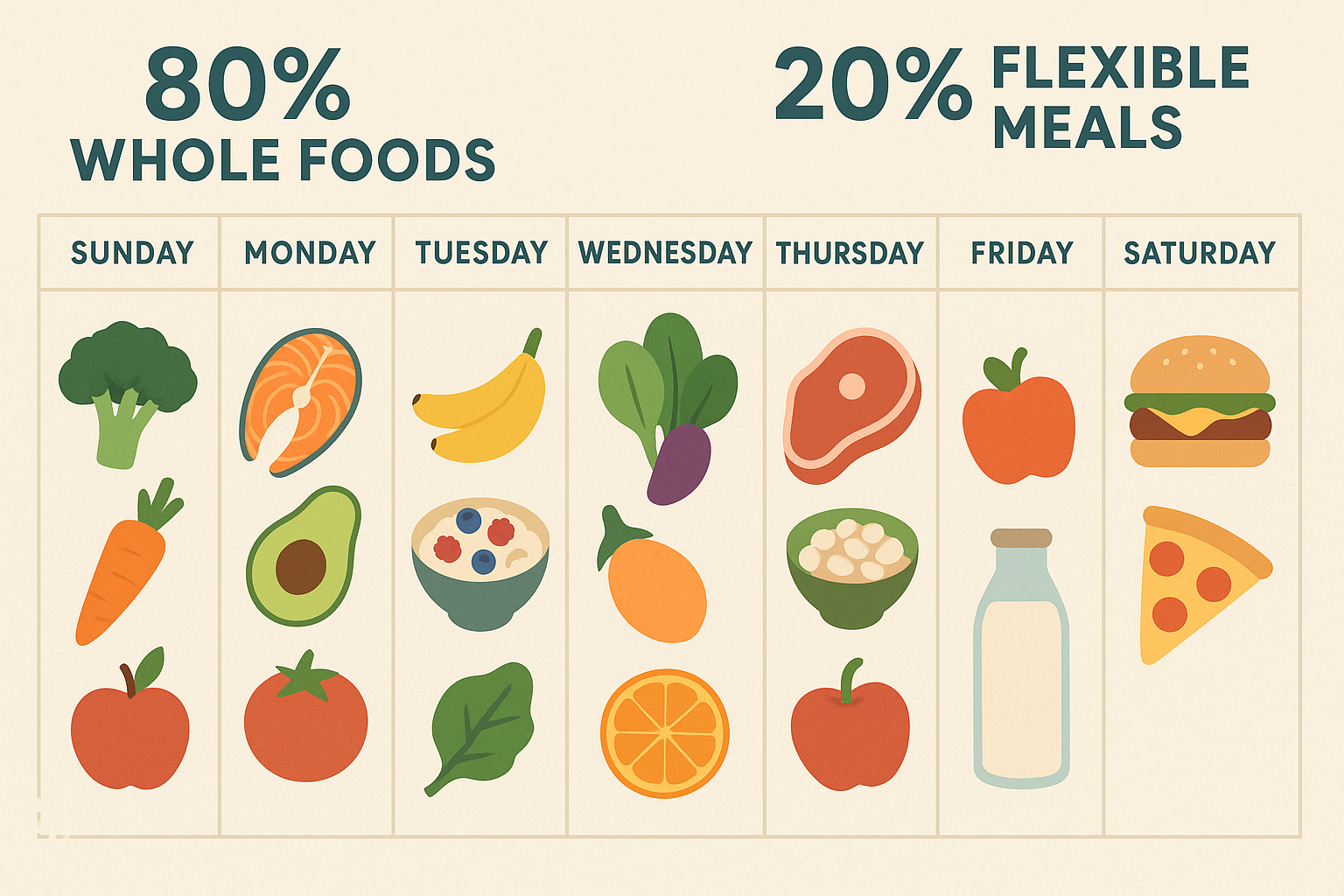
Movement Changes Everything
While paleo focuses primarily on food, the Primal Blueprint treats movement as equally important. This isn’t just about adding exercise to your routine – it’s about understanding how specific movement patterns work with primal nutrition for better results. The combination creates benefits that exceed either practice alone.
Timing Your Workouts and Meals for Maximum Impact
When you work out relative to when you eat can dramatically amplify your results. Most people exercise and eat based on convenience, missing opportunities to create powerful effects. Understanding these interactions helps you get more from both your training and your nutrition.
Do brief high-intensity movements like sprints or heavy lifting in a fasted state 1-2 times weekly. This combination maximizes growth hormone release and fat burning while improving insulin sensitivity. I prefer doing this first thing in the morning before breaking my fast.
Follow intense sessions with primal recovery foods within 30 minutes. Your muscles are primed to absorb nutrients during this window, and primal foods provide the right combination of protein and nutrients for optimal recovery.
Practice daily low-level movement like walking or hiking without specific fueling. This trains your body to efficiently burn fat for fuel, which is one of the key benefits of primal eating. No need for sports drinks or energy bars.
Take a gentle walk, do some light stretching, or even play with your kids after meals to help your body process the food more efficiently while adding movement that doesn’t feel like “exercise.”
This integrated approach demonstrates a key difference in primal vs paleo thinking – the Primal Blueprint sees movement and nutrition as connected systems rather than separate practices.
Finding Your Personal Primal Sweet Spot Through Trial and Error
The biggest mistake I see people make with primal eating is assuming one approach works for everyone. Your genetics, health history, and lifestyle create unique requirements that cookie-cutter meal plans can’t address. Figuring out what works for your body – rather than following someone else’s plan – is the key to making primal eating work optimally for you.
Discovering What Foods Actually Work for Your Body
Not all primal foods will make you feel amazing. Your individual makeup determines which ancestral foods give you energy versus which ones make you feel like garbage. This requires systematic testing rather than guesswork, but the payoff is huge – you’ll finally understand why certain “healthy” foods don’t work for your body.
According to research from BetterMe, 50-100g carbs per day is recommended if you’re sedentary or have a sedentary lifestyle, while 100-150g carbs per day works if you’re active and exercise 3-5 times per week, demonstrating how activity level significantly impacts optimal carbohydrate intake within primal parameters.
Testing Your Way to Your Perfect Food Profile
There’s a structured approach to figuring out which primal-approved foods work best for your unique body. This isn’t about eliminating foods permanently, but about understanding how your body responds to different options so you can make informed choices. The testing process takes patience, but it eliminates years of frustration and confusion.
This systematic approach mirrors the methodology used in identifying food intolerances, where careful observation reveals patterns that transform your health.
Start with 14 days of basic primal foods – meat, non-starchy vegetables, and healthy fats. This creates a clean baseline so you can accurately assess how new foods affect you. Keep track of your energy levels, mood, digestion, and sleep quality. Don’t overthink it – just jot down how you feel.
Add one new primal food category every 3 days while continuing to track your responses. Maybe add nuts and seeds first, then fruits, then starchy vegetables. The three-day window gives you enough time to notice delayed reactions while keeping the testing process moving.
My neighbor Mike discovered through this process that almonds gave him sustained energy for 4-5 hours, while walnuts made him feel sluggish within 30 minutes. This led him to grab almonds for afternoon snacks and save walnuts for evening when they actually helped him wind down for sleep.
Test foods at different times of day to identify timing sensitivities. Some people handle fruit beautifully in the morning but crash if they eat it in the evening. Others need starchy vegetables after workouts but feel sluggish if they eat them at other times.
Create your personalized food hierarchy based on how you actually feel. Tier 1 foods make you feel amazing and can be eaten freely. Tier 2 foods are fine in moderation or at specific times. Tier 3 foods might be technically primal but don’t work well for your body.
Primal Food Testing Checklist:
- Complete 14-day baseline phase with basic foods only
- Log energy, mood, digestion, and sleep daily (keep it simple)
- Introduce one new food category every 3 days
- Test foods at different times of day
- Create personalized food hierarchy (Tier 1, 2, 3)
- Note any delayed reactions up to 48 hours
- Track patterns across multiple testing cycles
This individualized approach is what makes the primal diet sustainable and effective long-term. Your mileage may vary, and that’s totally normal.
Understanding How Your Genetics Might Affect Your Food Choices
Common genetic variations significantly impact how you process primal diet staples like saturated fats, histamines, and certain plant compounds. While you don’t need genetic testing to succeed with primal eating, understanding these variations can explain why some people thrive on high-fat approaches while others feel better with moderate fat intake.
Consider genetic testing for APOE, MTHFR, and histamine-related genes if you’re having trouble figuring out your approach. These tests aren’t necessary for everyone, but they can provide valuable insights if you’re struggling with specific issues.
Adjust your saturated fat intake based on APOE status if you know it. People with certain variants may need to moderate their saturated fat intake even within a primal framework. This doesn’t mean avoiding it entirely, just being more strategic.
Modify your fermented food consumption if you have histamine sensitivity markers. Fermented foods are generally beneficial, but some people with genetic variations in histamine processing may need to limit them or choose specific types.
Adapt your plant food choices based on detoxification gene variants. Some people with slower detox pathways may need to be more careful with certain plant compounds, while others can handle a wider variety without issues.
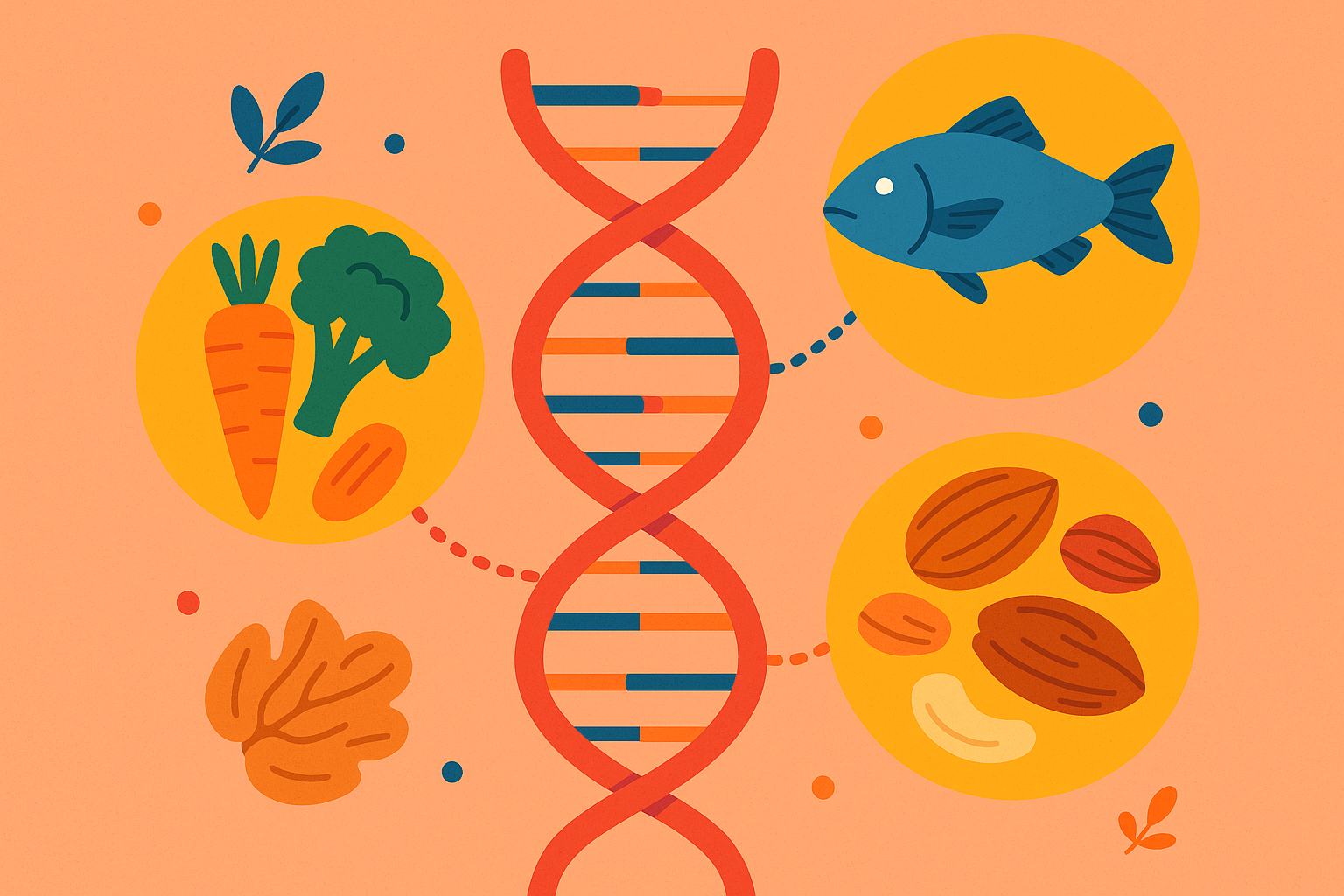
Supporting Your Hormones Through Strategic Eating
Primal nutrition can be fine-tuned to support specific hormonal challenges, from thyroid issues to reproductive hormone imbalances. This requires understanding how different nutrients affect hormone production, then timing and selecting foods accordingly. It’s more detailed than basic primal eating, but the results can be transformative.
Supporting Your Thyroid With Real Food
Thyroid dysfunction is incredibly common, and certain primal diet modifications can support healthy thyroid function while maintaining ancestral eating principles. This isn’t about treating medical conditions – it’s about providing your thyroid with the nutrients it needs to function well within a primal framework.
Include iodine-rich foods like seaweed and wild-caught fish 3-4 times weekly. Your thyroid needs iodine to make hormones, but most people don’t get enough from food alone. Seaweed is particularly rich in the kind your body can actually use.
Limit raw cruciferous vegetables unless they’re cooked or fermented. Raw broccoli, cauliflower, and kale can interfere with thyroid function in some people, but cooking neutralizes most of these compounds while keeping other benefits.
Make sure you’re getting adequate carbs from primal sources to support hormone conversion. Very low-carb approaches can sometimes mess with thyroid function in sensitive people. Sweet potatoes, fruits, and starchy vegetables can provide the glucose your thyroid needs.
Time selenium-rich foods like Brazil nuts or organ meats with your iodine sources. Selenium is crucial for thyroid hormone conversion, and combining it with iodine-rich foods may help with absorption and utilization.
Syncing Primal Eating With Female Hormone Cycles
Women’s nutritional needs change throughout their menstrual cycle, and adjusting primal eating patterns accordingly can optimize energy, mood, and metabolic function. This level of customization might seem excessive, but many women find it makes a dramatic difference in how they feel throughout the month.
This cyclical approach complements maintaining hormonal balance through targeted nutritional strategies.
Increase complex carbs from primal sources during your luteal phase (after ovulation). Your body’s energy needs increase during this time, and adequate carbs can help prevent PMS symptoms and support progesterone production.
Emphasize iron-rich foods like organ meats and leafy greens during menstruation to replace what you’re losing. This is also when your body can best absorb iron, so timing matters for maximizing the benefit.
Include moderate amounts of phytoestrogen sources like flax seeds during your follicular phase (after menstruation) when estrogen is naturally rising. These plant compounds can help support healthy estrogen metabolism.
Adjust your intermittent fasting length based on your cycle phase and energy levels. Some women find they need shorter fasting windows during certain parts of their cycle to maintain hormonal balance.
| Cycle Phase | Duration | Nutritional Focus | Primal Food Examples |
|---|---|---|---|
| Menstrual | Days 1-5 | Iron, B-vitamins, warming foods | Liver, beef, leafy greens, ginger |
| Follicular | Days 1-13 | Light, fresh foods, moderate phytoestrogens | Fish, sprouts, flax seeds, berries |
| Ovulatory | Days 14-16 | Raw foods, fiber, antioxidants | Raw vegetables, fruits, nuts |
| Luteal | Days 17-28 | Complex carbs, magnesium, healthy fats | Sweet potatoes, avocado, dark chocolate |
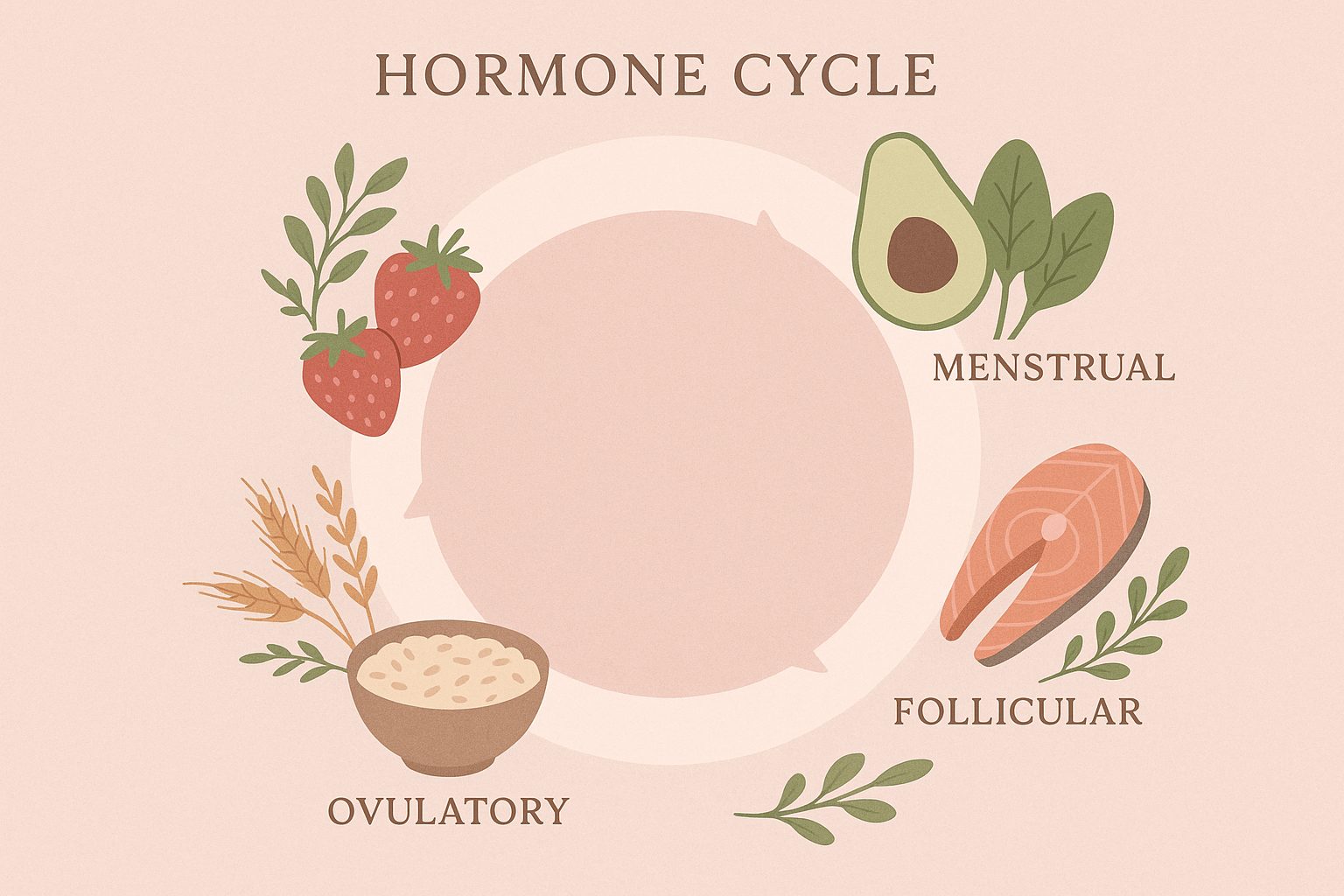
Advanced Strategies for Body Composition and Performance
Moving beyond basic health outcomes, you can use more sophisticated strategies to optimize body composition, athletic performance, and cognitive function while maintaining primal eating principles. This isn’t about abandoning the fundamentals – it’s about leveraging advanced techniques that work together with ancestral nutrition. These approaches require more precision and monitoring, but they can take your results to the next level.
Strategic Very Low Carb Periods Using Only Primal Foods
Ketosis periods can speed up fat loss and enhance mental clarity, but they need careful integration with primal food choices and lifestyle factors. The key is using cyclical approaches that maximize metabolic flexibility while preventing the adaptation plateaus that come with long-term ketosis. This isn’t about staying in ketosis forever – it’s about using it strategically.
Cycling Between Very Low Carb and Higher-Carb Phases
Alternating between ketotic and higher-carb phases using only primal foods maximizes metabolic flexibility while preventing your body from adapting to either state. This approach keeps your metabolism guessing while maintaining the food quality standards that make primal eating so effective. The timing and duration of each phase matters more than perfect macro ratios.
Follow very low carb primal eating for 5-6 days using coconut oil, avocados, and fatty cuts of grass-fed meat. Keep your carbs under 30g daily from low-carb vegetables only. This duration is long enough to enter ketosis but short enough to prevent metabolic slowdown.
Include 1-2 higher-carb days using sweet potatoes, fruits, and starchy vegetables to refill energy stores. These aren’t “cheat days” – you’re still eating primal foods, just shifting the ratios to support metabolic flexibility.
Time your carb refeeds around your most intense training sessions when your muscles can best use the extra glucose. This prevents fat storage while supporting performance and recovery.
Monitor ketone levels using breath or blood testing to understand your personal patterns. Some people enter ketosis quickly, others take longer. Knowing your timeline helps you optimize the cycling frequency.
This cyclical approach shows how the primal diet can be adapted for specific performance goals while maintaining its foundational principles.
Optimizing Brain Function Through Primal Ketosis
Specific primal foods and timing strategies can optimize how your brain uses ketones for enhanced mental performance. Your brain can run efficiently on ketones, but certain foods and timing approaches can amplify this effect. This is particularly useful for people who do mentally demanding work or want to enhance focus and clarity.
Use MCT oil from coconut sources for rapid ketone production before important mental tasks. MCTs bypass normal fat digestion and go straight to your liver for ketone production. I take a tablespoon about 30 minutes before I need peak mental performance.
Include omega-3 rich foods like wild-caught fish and grass-fed meat to support brain health. Ketones provide fuel, but your brain still needs structural fats for optimal function. The combination is more powerful than either alone.
Time longer fasting periods before important cognitive demands when you’re already adapted to low carb. Extended fasts can increase ketone production and growth hormone release, both of which support brain function. Start with 18-24 hour fasts and adjust based on how you feel.
Track your mental clarity and focus throughout different phases to optimize your personal approach. Some people think better in ketosis, others prefer having some glucose available. There’s no universal “best” state – only what works for your brain.
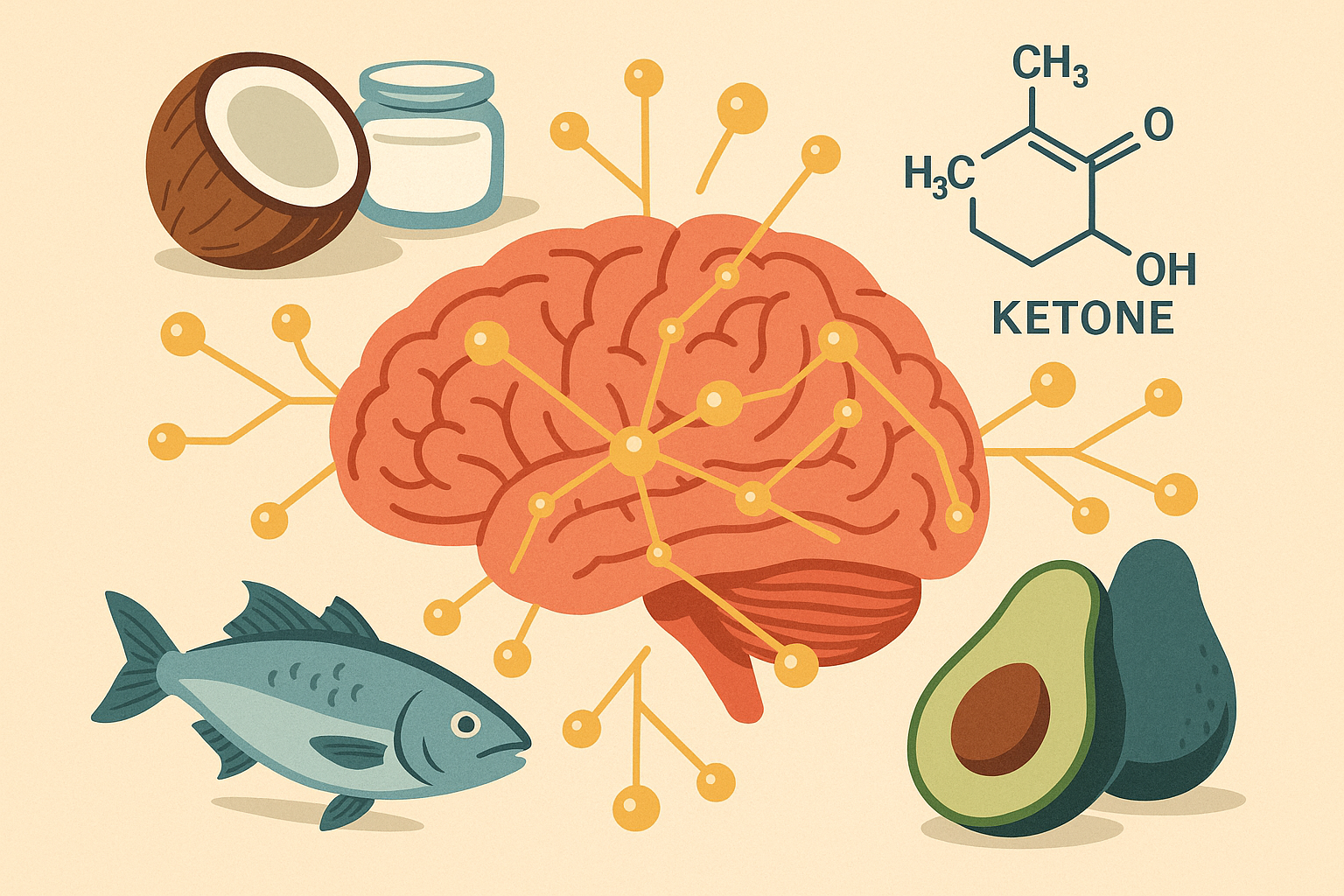
The Primal Bod Approach: When Physique Goals Take Priority
The “Primal Bod” variation specifically targets body recomposition goals, emphasizing how to leverage primal eating principles for specific physique outcomes rather than general health. This approach requires understanding that not all primal foods are created equal when body composition is your primary focus. It’s still ancestral eating, but with strategic modifications that prioritize foods that help you burn more calories, build muscle efficiently, and optimize hormones for fat loss.
This targeted approach shares similarities with finding your carb tolerance – both require systematic testing to optimize results.
Ranking Primal Foods for Maximum Body Composition Impact
When physique goals take priority, you need to think about primal foods in terms of their return on investment for body recomposition. Some foods provide incredible benefits for muscle building and fat loss, while others are healthy but less strategic for these specific goals. Understanding this hierarchy helps you make better choices without abandoning primal principles.
Tier 1 Foods That Deliver Maximum Results
These primal foods provide the highest return on investment for body recomposition through optimal protein content, metabolism-boosting effects, and hormonal benefits. They should form the foundation of your approach when physique goals are the priority. Quality matters even more at this level – you want the most nutrient-dense versions possible.
Prioritize grass-fed beef, wild-caught salmon, and pastured eggs as your primary protein sources. These provide complete amino acid profiles with additional benefits like CLA from grass-fed beef and omega-3s from wild salmon. The protein quality is superior to conventional options.
Include coconut oil and avocados for their metabolism-boosting fats and steady energy that doesn’t interfere with fat burning. These fats support hormone production while providing energy. They’re also incredibly satisfying.
Emphasize cruciferous vegetables like broccoli, cauliflower, and Brussels sprouts for their detox support and fiber content. These vegetables help your body process hormones more efficiently while providing volume and nutrients with minimal calories.
My friend Jennifer, who was prepping for a fitness competition, restructured her primal approach by eating 6 oz of grass-fed beef and 2 cups of broccoli for lunch daily during her 12-week prep. This combination provided 45g of protein, supported her liver’s hormone processing, and kept her satisfied for 5+ hours while maintaining a calorie deficit.
Track your body composition changes weekly using measurements, photos, or body fat testing to validate that your food choices are working. Data removes guesswork and helps you adjust your approach based on actual results rather than assumptions.
The primal bod food list prioritizes foods based on their metabolism-boosting properties and muscle-building potential, making it distinct from general health-focused approaches.
Tier 2 Foods That Support Your Goals Strategically
Secondary primal foods can support body composition goals when combined with Tier 1 foods, but they may require timing considerations or portion control. These aren’t “bad” foods – they’re just less strategic for physique-focused goals. Understanding when and how to include them prevents stagnation while maintaining variety.
Use sweet potatoes and plantains strategically around training sessions when your muscles can best use the carbs. These provide clean energy for performance while supporting recovery, but timing matters for body composition goals.
Include nuts and seeds in measured portions to prevent calorie excess while still getting their nutrient benefits. They’re easy to overeat, so pre-portioning helps you get the benefits without sabotaging your calorie goals.
Rotate different organ meats weekly for nutrient density without getting bored. Liver, heart, and kidney provide nutrients that are hard to get elsewhere, but variety prevents monotony and ensures a broader nutrient profile.
Time fruit consumption to early in the day or post-workout windows when insulin sensitivity is highest. Fruit provides valuable nutrients and can satisfy sweet cravings, but strategic timing prevents fat storage.
The primal bod diet emphasizes these timing strategies to maximize the body composition benefits of each food choice.
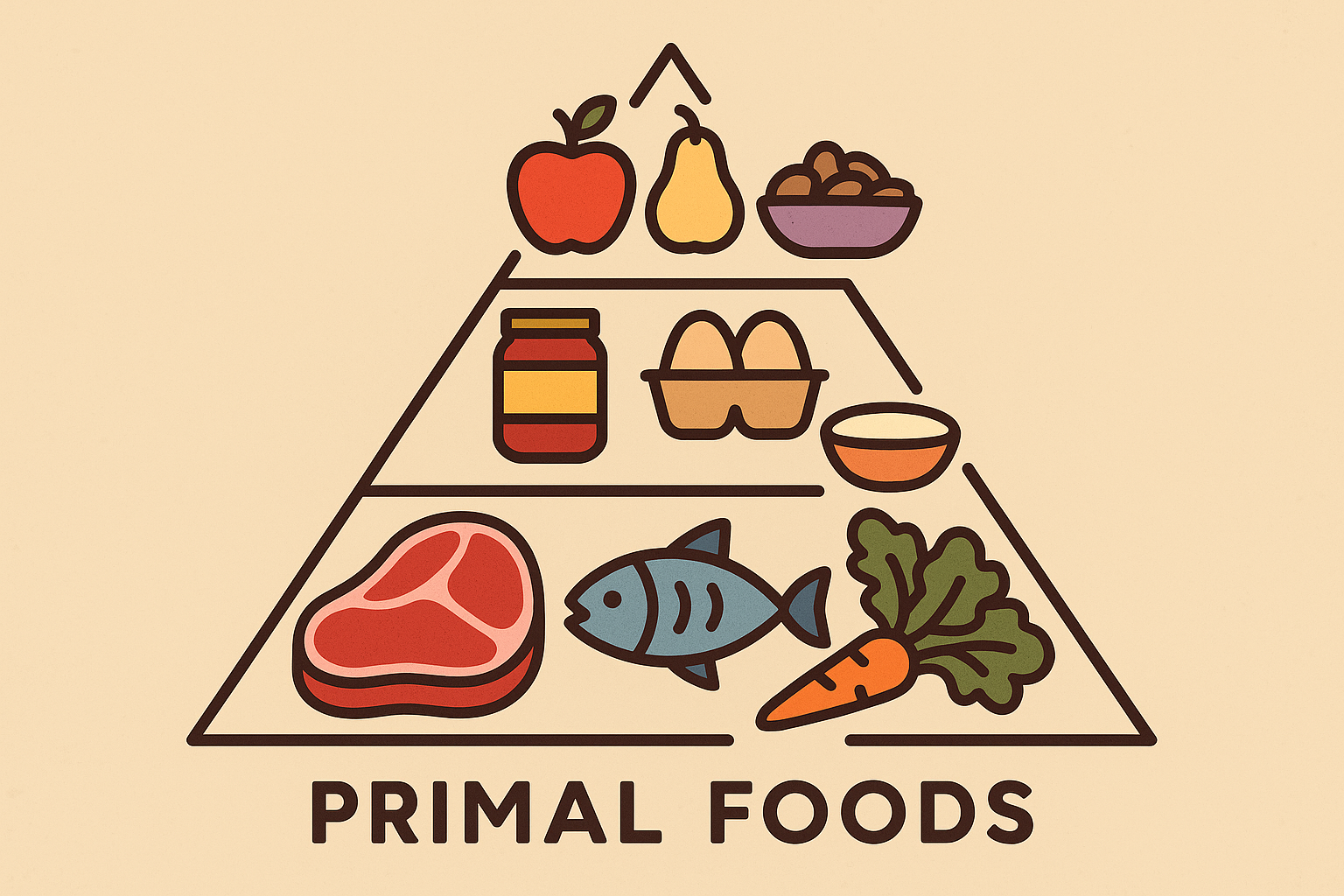
Understanding Primal vs Paleo for Body Composition
While both approaches can support body composition goals, the primal approach’s flexibility and lifestyle integration often produces better long-term adherence and sustainable results for physique-focused individuals. The psychological aspects of body composition success often matter more than perfect dietary adherence, and this is where the primal philosophy really shines.
Why Not Losing Your Mind Trumps Perfect Adherence
The mental and emotional aspects of body composition success often determine long-term outcomes more than perfect dietary compliance. Burnout, rebellion, and all-or-nothing thinking kill more physique goals than imperfect food choices ever will. The primal approach’s built-in flexibility prevents these psychological pitfalls.
Build in planned social eating situations using the 80/20 principle rather than avoiding social events entirely. Isolation kills long-term success, and the stress of constant restriction can actually hurt body composition through elevated stress hormones.
Create non-food rewards for body composition milestones to build positive associations with your progress. New workout clothes, massage appointments, or other treats help maintain motivation without using food as the reward system.
Track your adherence patterns to identify your personal sustainability sweet spots. Some people can handle strict approaches for short periods, others need consistent moderate flexibility. Knowing your pattern prevents burnout.
Adjust your strictness levels based on life stress and competing priorities. During high-stress periods, perfect adherence might actually be counterproductive. Sometimes good enough is better than perfect if it prevents complete derailment.
This psychological framework is what makes the primal diet more sustainable than rigid paleo approaches for long-term body composition goals.
Integrating Training With Primal Nutrition for Optimal Results
Coordinating primal eating with specific training approaches maximizes body composition results through strategic nutrient timing and recovery optimization. This isn’t just about eating primal foods and exercising separately – it’s about understanding how they work together to amplify your results.
This integration approach mirrors how marine collagen supports recovery when timed strategically with training.
Consume 25-30g of primal protein within 2 hours post-resistance training to maximize muscle protein synthesis. Your muscles are primed to use amino acids during this window, and primal protein sources provide superior amino acid profiles compared to processed options.
Use intermittent fasting on non-training days to enhance fat burning while preserving muscle mass. Training days require more strategic fueling, but rest days are perfect for extending fasting periods to accelerate fat loss.
Include anti-inflammatory primal foods like turmeric, ginger, and fatty fish on high-volume training days to support recovery and reduce exercise-induced inflammation. This helps you train more frequently while recovering more completely.
Adjust your carb timing based on your training schedule and recovery needs. Heavy training days might require more strategic carb timing, while lighter days can use lower-carb approaches to enhance fat burning.
The primal diet’s flexibility allows for these training-specific modifications while maintaining its foundational principles.
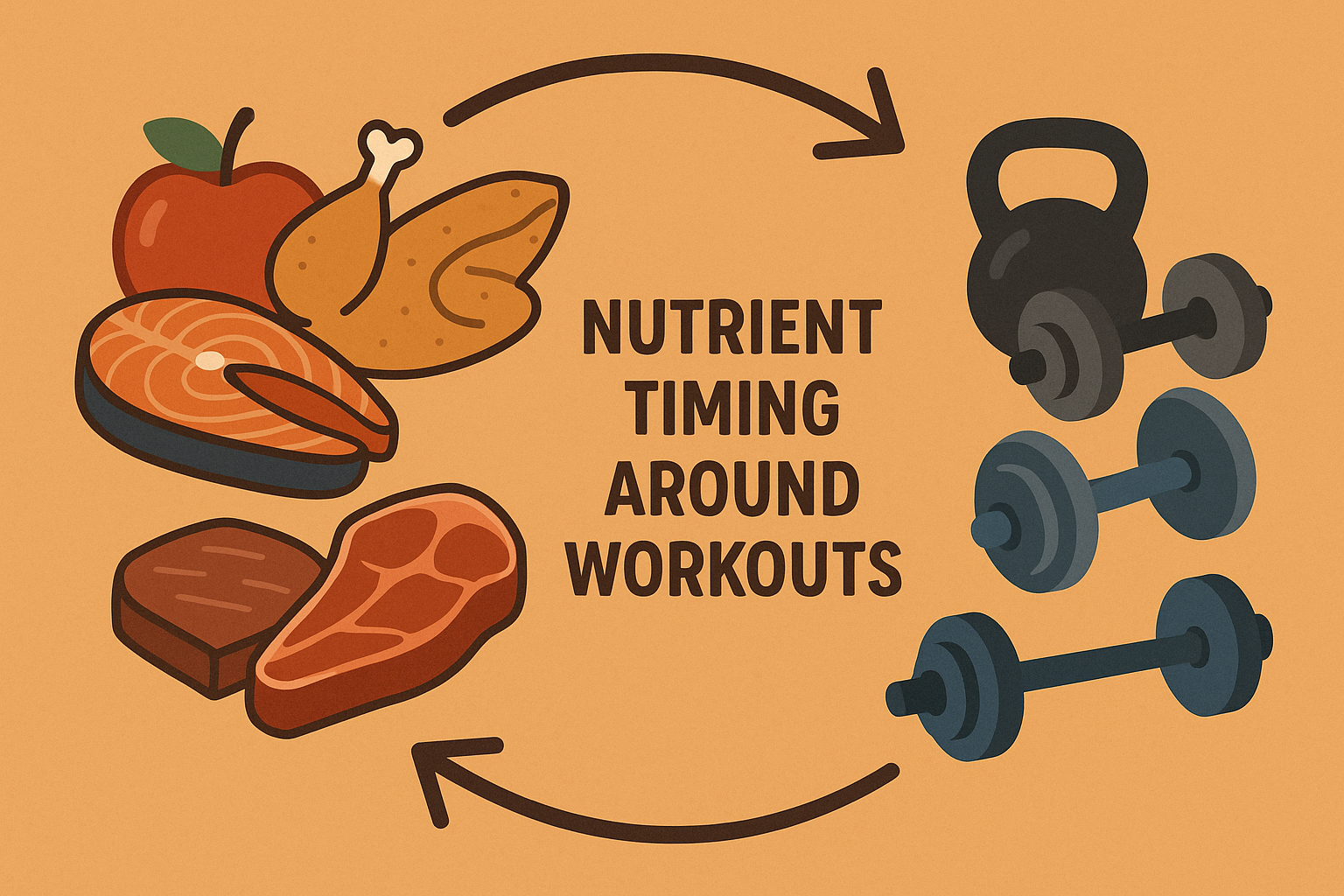
Final Thoughts
I’ve spent years experimenting with different approaches to ancestral eating, and what I’ve learned is that the primal diet’s real power isn’t in its food lists or rules – it’s in how it works with your individual biology and psychology. The brain changes, the gut improvements, the hormonal benefits – these all happen when you understand the principles behind the approach rather than just following someone else’s meal plan.
The difference between people who succeed long-term with primal eating and those who struggle isn’t willpower or perfect adherence. It’s understanding how to customize the approach for their unique needs, whether that’s genetic variations, hormonal challenges, or specific body composition goals. Cookie-cutter approaches fail because they ignore how different we all are in how we process foods and respond to stress.
What I find most exciting about this approach is how it evolves with you. The rough first few days that help you transition initially become less important as your brain adapts. The strict elimination phase gives way to strategic flexibility as you figure out your personal food responses. The basic health benefits expand into advanced optimization strategies as you master the fundamentals.
If you’re feeling overwhelmed by all the customization possibilities, start simple. Focus on the brain stuff first – ditch processed foods, time your protein intake, and pay attention to how different primal foods affect your energy and mood. The advanced strategies will make more sense once you’ve experienced the basic benefits.
Understanding what is the primal diet at its core – a brain reset system rather than just another restrictive eating plan – transforms how you approach the entire journey. The primal blueprint diet provides a framework, but your individual response determines the specific implementation.
For those looking to support their primal journey with high-quality supplements, Organic Authority offers carefully vetted options that align with ancestral nutrition principles. Their marine collagen, for instance, provides the same bioavailable nutrients that make primal eating so effective – natural, absorbable forms that your body recognizes and utilizes efficiently. Check out their curated selection of wellness products that complement your primal lifestyle.
Remember, this isn’t about perfection – it’s about finding an approach that works sustainably for your life, your goals, and your individual biology. The primal diet meal plan that transforms your health is the one you can actually stick with while feeling amazing. Everything else is just details.


